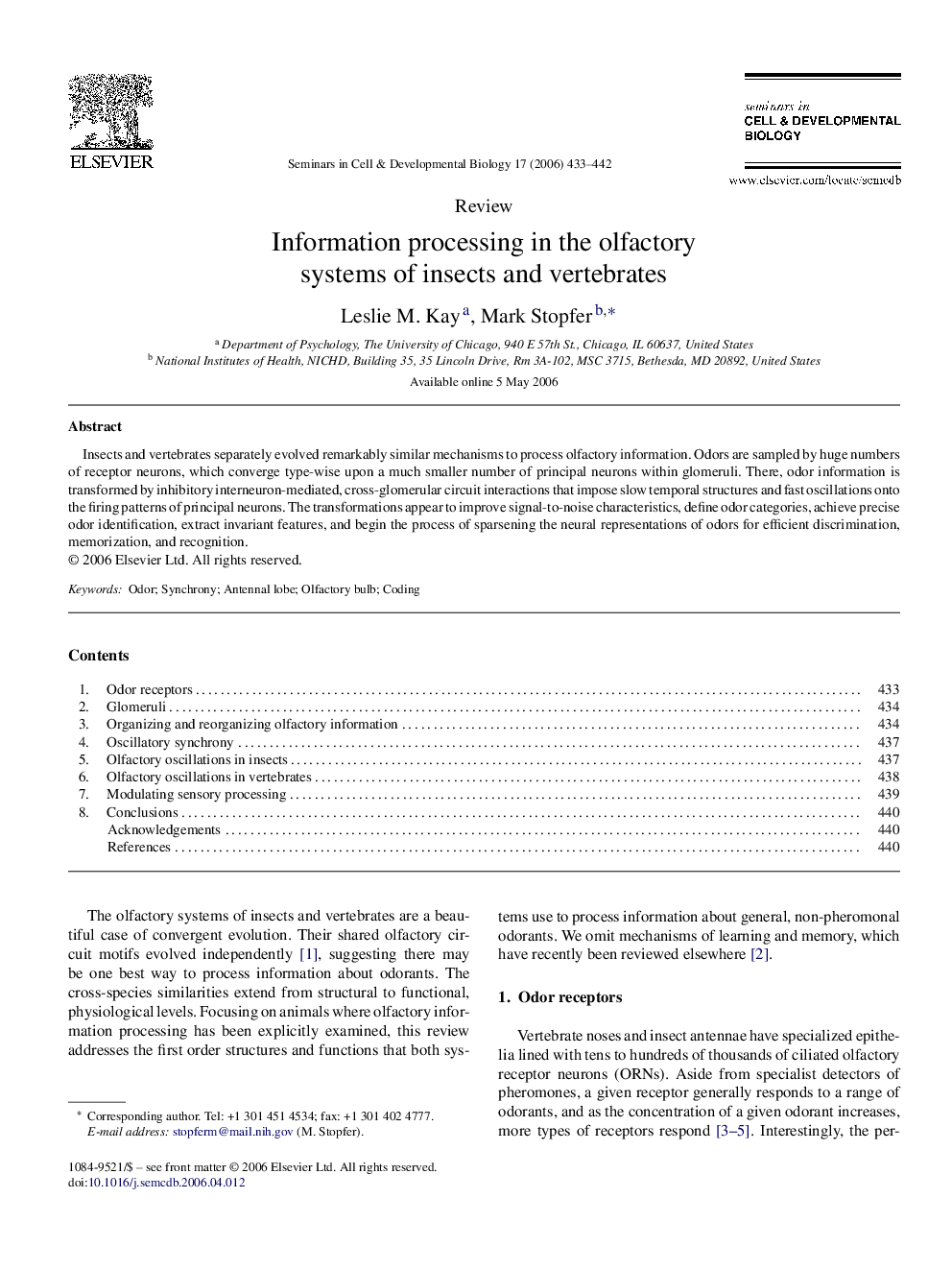| Article ID | Journal | Published Year | Pages | File Type |
|---|---|---|---|---|
| 2203425 | Seminars in Cell & Developmental Biology | 2006 | 10 Pages |
Insects and vertebrates separately evolved remarkably similar mechanisms to process olfactory information. Odors are sampled by huge numbers of receptor neurons, which converge type-wise upon a much smaller number of principal neurons within glomeruli. There, odor information is transformed by inhibitory interneuron-mediated, cross-glomerular circuit interactions that impose slow temporal structures and fast oscillations onto the firing patterns of principal neurons. The transformations appear to improve signal-to-noise characteristics, define odor categories, achieve precise odor identification, extract invariant features, and begin the process of sparsening the neural representations of odors for efficient discrimination, memorization, and recognition.
